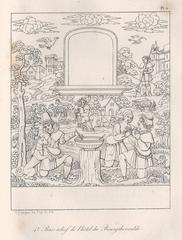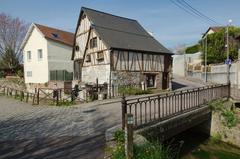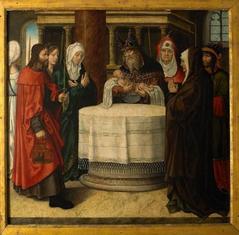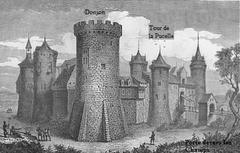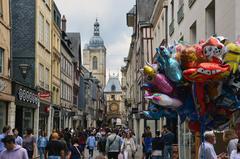Quai Jean-Moulin Rouen Visiting Hours, Tickets, and Travel Guide
Date: 04/07/2025
Introduction to Quai Jean-Moulin in Rouen
Quai Jean-Moulin, situated along the Seine River in Rouen, France, is a dynamic riverside promenade where centuries of history meet contemporary urban culture. From its origins in Roman times through medieval prominence as a Norman port, to its present-day role as a cultural and social hub, the quay is both a living testament to Rouen’s evolution and a vibrant setting for festivals, markets, and public gatherings. Its accessible, open spaces and proximity to iconic landmarks like Rouen Cathedral and the Gros Horloge make it an essential stop for travelers seeking to experience the city’s historical layers and modern atmosphere (en.visiterouen.com; metropole-rouen-normandie.fr; foreverlostintravel.com; medievalesderouen.fr; en.normandie-tourisme.fr; archivesdepartementales76.net).
This comprehensive guide covers the quay’s fascinating heritage, practical visiting information, annual highlights, and travel tips to ensure you make the most of your visit.
Contents
- Introduction
- Historical Overview: From Roman Times to Today
- Recent Revitalization and Urban Design
- Cultural and Architectural Significance
- Visitor Information: Hours, Tickets, Accessibility
- Annual Events and Community Life
- Nearby Attractions and Photographic Spots
- Practical Travel Tips and FAQ
- Maps, Images, and Virtual Resources
- Conclusion
Historical Overview: From Roman Times to Today
Roman and Medieval Foundations
Rouen, once called Rotomagus, was established by the Romans for its strategic access to the Seine. The riverbanks—including the area now known as Quai Jean-Moulin—have long enabled trade and military logistics, connecting the city to the English Channel. During the Middle Ages, the quay became central to commerce, shipbuilding, and warehousing as Rouen flourished as the capital of the Duchy of Normandy (en.visiterouen.com).
Industrial Transformation and Modern Expansion
The 19th century brought significant change as industrialization prompted the expansion of quays, construction of railways and bridges, and the replacement of timber buildings with stone and brick warehouses. Urban projects improved embankments and river navigation, integrating the quays into Rouen’s growing city grid for improved accessibility (metropole-rouen-normandie.fr).
20th Century: War, Reconstruction, and Renewal
World War II left much of Rouen’s riverfront, including Quai Jean-Moulin, damaged. Post-war efforts focused on rebuilding infrastructure, restoring accessibility, and introducing public amenities. The quay evolved into a space balancing historical preservation with the needs of a modern city (en.visiterouen.com).
Recent Revitalization and Urban Design
Entering the 21st century, the Métropole Rouen Normandie has prioritized the revitalization of Quai Jean-Moulin. Efforts include the development of pedestrian and cyclist pathways, installation of modern lighting, and the creation of landscaped parks and public seating. These enhancements foster sustainable mobility and social interaction, making the quay a popular venue for festivals, markets, and exhibitions (metropole-rouen-normandie.fr; foreverlostintravel.com).
A notable feature is the central landscaped median, improving safety and providing green space. Accessibility features—ramps, wide walkways, and clear signage—make the quay welcoming for all visitors.
Cultural and Architectural Significance
Quai Jean-Moulin presents a tapestry of Rouen’s historic and architectural evolution. While some medieval structures were lost to war and redevelopment, 19th-century facades and industrial remnants endure alongside modern civic buildings such as the Hôtel du Département de Seine-Maritime (Monumentum). The quay’s blend of old and new reflects Rouen’s resilience and adaptability.
Culturally, the quay is celebrated for its role in hosting public art installations, concerts, and community events. It offers panoramic views of the Seine, Rouen’s skyline, and landmarks like the Pont Jeanne d’Arc.
Visitor Information: Hours, Tickets, Accessibility
- Opening Hours: Quai Jean-Moulin is a public space open year-round, 24/7. Specific institutions or events may have their own schedules.
- Tickets: Access to the quay is free. Some exhibitions or guided tours (e.g., Hôtel du Département, Archives départementales) require tickets or advance booking—check official schedules for details (archivesdepartementales76.net).
- Accessibility: The quay is designed with smooth, wide pathways, ramps, and accessible restrooms during major events. It is suitable for pedestrians, cyclists, families, and visitors with reduced mobility. Nearby public transport links include the “Joffre Mutualité” metro stop and several bus lines.
- Parking: Public parking is available nearby but may be limited, especially during large events.
Annual Events and Community Life
Quai Jean-Moulin is a focal point for Rouen’s most celebrated events, drawing both locals and visitors:
- Foire Saint-Romain: France’s oldest funfair, held mid-October to mid-November, transforms the quay with rides, games, and local food (en.visiterouen.com).
- Rouen sur Mer: In July and August, the quay becomes an urban beach with sand, deckchairs, sports, and concerts.
- Les Terrasses du Jeudi: July’s Thursday evenings feature free open-air concerts and food trucks along the river.
- The Great Armada: Every five years, tall ships and historic vessels gather for a maritime celebration, with the quay serving as a prime viewing area (france-voyage.com).
- Gastronomic Festivals: The Fête du Ventre and Rouen à Table showcase Normandy’s culinary heritage in autumn (en.visiterouen.com).
- Special Exhibitions: The Archives départementales offer public exhibitions and workshops, especially during European Heritage Days.
- Community Gatherings: The quay’s accessible design and nearby civic institutions foster public engagement, picnics, street performances, and recreational activities.
Nearby Attractions and Photographic Spots
- Rouen Cathedral: A Gothic masterpiece within walking distance.
- Place du Vieux Marché: Site of Joan of Arc’s execution, now a bustling market square.
- Musée des Beaux-Arts: Renowned for Impressionist works.
- Prairie Saint-Sever: Riverside green space adjacent to the quay.
- Tour des Archives: The 104-meter archive tower offers a striking architectural photo opportunity (actu.fr).
- Photographic Highlights: Panoramic river views, historic ships during Armada, and vibrant event scenes.
Practical Travel Tips and FAQ
Travel Tips
- Best Time to Visit: Spring through early autumn for festivals and pleasant weather.
- Dining: Riverside cafés and bistros serve regional specialties.
- Transport: Use public transport or cycling; parking is limited during events.
- Safety: The area is generally safe; exercise usual caution during crowded events.
- Guided Tours: Walking tours and river cruises are available—book in advance for popular dates.
FAQ
Q: Are there entrance fees for Quai Jean-Moulin?
A: No, the quay is free and open to the public. Special exhibitions or guided tours may require tickets.
Q: Is Quai Jean-Moulin accessible for visitors with disabilities?
A: Yes, the quay features smooth pathways, ramps, and accessible restrooms during events.
Q: What is the best way to reach the quay?
A: By public transport—metro (Joffre Mutualité stop), bus, or by foot from the city center.
Q: When is the best time to visit?
A: During major events for a lively experience, or early morning/weekday for a quieter visit.
Q: Are there guided tours?
A: Yes, especially during special events and European Heritage Days.
Maps, Images, and Virtual Resources
To enhance your planning, explore the following resources:
- Official Rouen tourism website for interactive maps and virtual tours.
- Photo galleries and event highlights on Normandie Tourisme.
- Up-to-date event schedules on the official Rouen events calendar.
Conclusion
Quai Jean-Moulin stands as a vibrant symbol of Rouen’s enduring history and cultural dynamism. Its transformation from ancient port to contemporary urban promenade invites exploration across the ages—whether you’re drawn by heritage, festivals, or riverside leisure. With year-round free access, excellent amenities, and a robust calendar of events, Quai Jean-Moulin is a must-visit for anyone seeking the authentic spirit of Rouen.
Plan your trip today: Check event schedules, book tours in advance, and download the Audiala app for the latest updates, travel tips, and exclusive content. For more inspiration and practical advice, follow Rouen’s official tourism channels and explore related guides on Normandy’s top attractions.
Sources and Further Reading
- This guide incorporates details from en.visiterouen.com
- metropole-rouen-normandie.fr
- foreverlostintravel.com
- medievalesderouen.fr
- en.normandie-tourisme.fr
- archivesdepartementales76.net
- Monumentum
- actu.fr
- france-voyage.com
